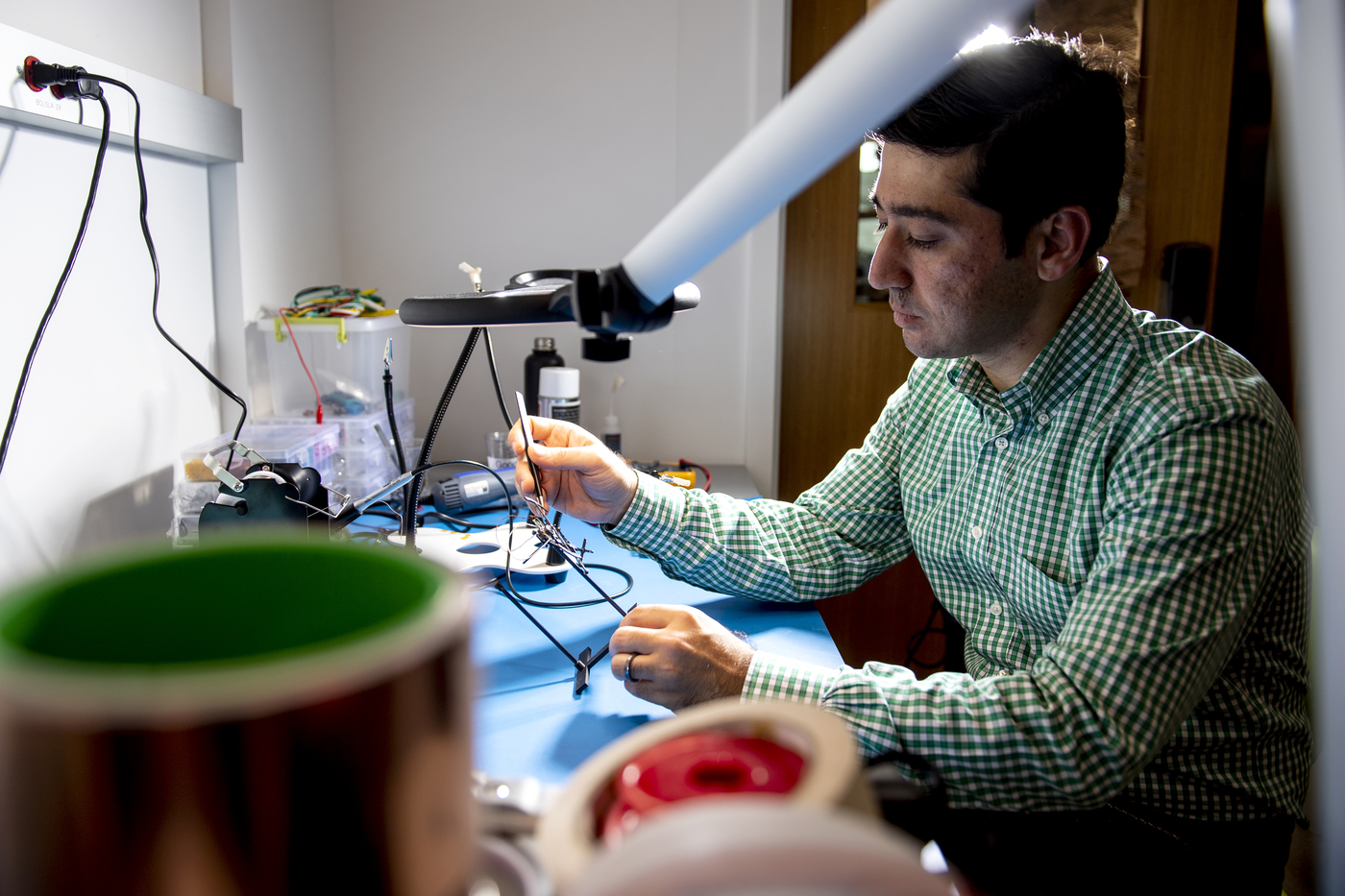Groundbreaking, Animal-Inspired Robot Rolls, Crawls and Flies into the Future of Robotics
The multi-modal mobility morphobot (M4), designed by a team of researchers led by ECE Assistant Professor Alireza Ramezani, is a shape-shifting robot with eight modes of mobility inspired by animals, capable of seamlessly transitioning between crawling, flying, rotating, and using thrusters, with potential applications in space exploration, package delivery, and search and rescue operations.
This article originally appeared on Northeastern Global News. It was published by Cody Mello-Klein. Main photo: The multi-modal mobility morphobot, or M4, has eight modes of mobility, from a crawl to flight. Photo Courtesy of Caltech
It’s a bird, it’s a bat, it’s a robot!
A new advancement in robotics, the multi-modal mobility morphobot, or M4, could bring innovative solutions to everything from space exploration to package delivery, with a little help from the animal kingdom.
Designed by a team of researchers led by Alireza Ramezani, assistant professor of electrical and computer engineering at Northeastern University, M4 is a shapeshifter. It has eight modes of mobility––from crawling to flying––and, taking inspiration from birds, bats and even meerkats, it can change seamlessly between them.
In one moment, M4 could be a four-wheeled vehicle driving like any number of other wheeled robots. The next moment, it could be using those wheels to crawl, wheel by wheel, like a lizard. And the next moment, it could rotate all four wheels, which also house propellers, to become a quadcopter capable of flight. It can even sit on two wheels, similar to a meerkat on its hind legs, and use two thrusters to propel itself forward.

Alireza Ramezani, assistant professor in electrical and computer engineering, works in the Interdisciplinary Science and Engineering Complex. Photo by Ruby Wallau/Northeastern University
“To the best of my knowledge––I’ve been in this field 15 years––I cannot think of any robot with this level of locomotion plasticity and number of modes that we have showcased,” Ramezani says.
That’s not the only novelty M4 brings to the table. Based on its surroundings and the obstacles it detects in the environment, M4 can switch between its various modes of mobility autonomously. Ramezani says this is a first in the world of robotics, where autonomous movement has long been the norm in robots with one method of moving.
In 2020, Ramezani started to conceive of a machine that could change its shape and use thrust vectoring, the process of manipulating thrust force generated by devices like propellers. He saw “no end to the applications of a machine like this.”
When it came time to design their robot, Ramezani and Morteza Gharib, a fluid dynamics expert at Caltech who collaborated on this project, found inspiration in the natural world. Ramezani is well-known for his bio-inspired designs, particularly his work with bats that formed the foundation for M4’s shapeshifting design.
Read full story at Northeastern Global News
See related Media Coverage and Publications.